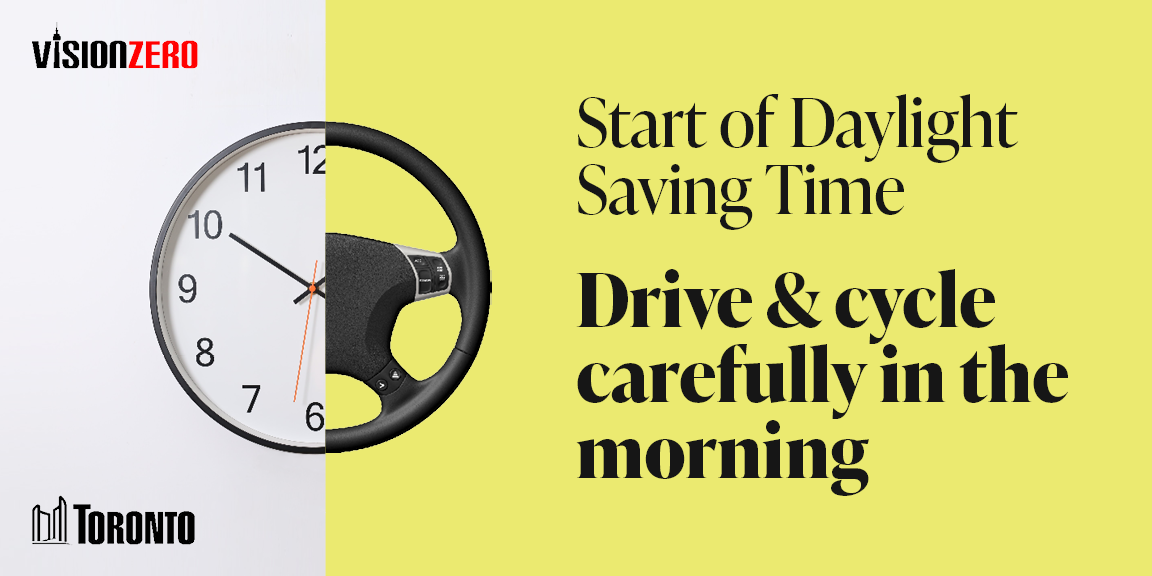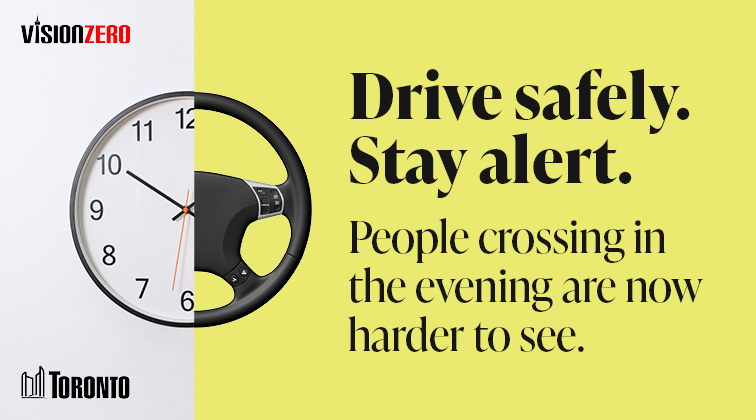
The start of daylight saving time means reduced visibility in the early morning hours for all road users in the city. This year, we’re turning the clocks forward at 2 a.m. on Sunday, March 10.
To draw attention to the increased risks facing all road users, the City has launched a city-wide public education campaign that promotes road safety at the start of daylight saving time in Toronto. The campaign intends to remind Torontonians, especially people driving and cycling, to be aware of each other as they share the city’s roads.
When visibility is reduced, people and objects on the road are harder to see. The City is asking all road users to follow these safety tips:

The return to standard time means fewer daylight hours and reduced visibility for all road users in the city. In Toronto, pedestrian collisions increase by more than 30 per cent during the evening commute hours from November to March.
This year, we’re turning the clocks back at 2 a.m. on Sunday, November 3.
When visibility is reduced, people and objects on the road are harder to see. The City is asking drivers to follow the following safety tips after the return to standard time:
